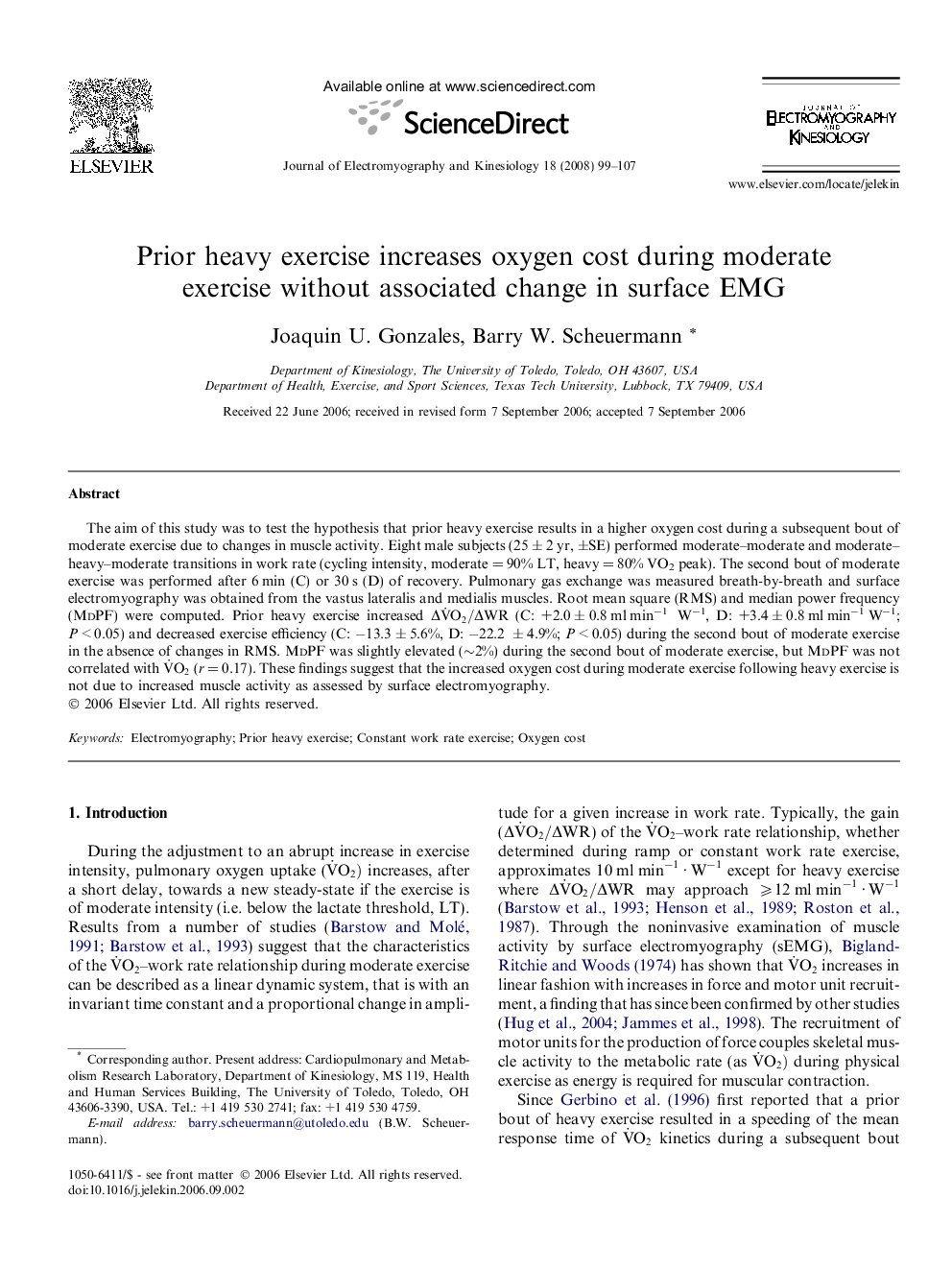| Article ID | Journal | Published Year | Pages | File Type |
|---|---|---|---|---|
| 4065374 | Journal of Electromyography and Kinesiology | 2008 | 9 Pages |
The aim of this study was to test the hypothesis that prior heavy exercise results in a higher oxygen cost during a subsequent bout of moderate exercise due to changes in muscle activity. Eight male subjects (25 ± 2 yr, ±SE) performed moderate–moderate and moderate–heavy–moderate transitions in work rate (cycling intensity, moderate = 90% LT, heavy = 80% VO2 peak). The second bout of moderate exercise was performed after 6 min (C) or 30 s (D) of recovery. Pulmonary gas exchange was measured breath-by-breath and surface electromyography was obtained from the vastus lateralis and medialis muscles. Root mean square (RMS) and median power frequency (MdPF) were computed. Prior heavy exercise increased ΔV˙O2/ΔWR (C: +2.0 ± 0.8 ml min−1 W−1, D: +3.4 ± 0.8 ml min−1 W−1; P < 0.05) and decreased exercise efficiency (C: −13.3 ± 5.6%, D: −22.2 ± 4.9%; P < 0.05) during the second bout of moderate exercise in the absence of changes in RMS. MdPF was slightly elevated (∼2%) during the second bout of moderate exercise, but MdPF was not correlated with V˙O2 (r = 0.17). These findings suggest that the increased oxygen cost during moderate exercise following heavy exercise is not due to increased muscle activity as assessed by surface electromyography.
